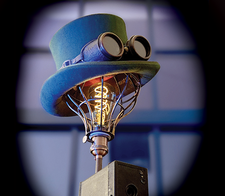Controlling microcontrollers over USB with the Web Serial API
Under Control

© Photo by Johnny Briggs on Unsplash
Article from Issue 276/2023
Upgrade your computer with LEDs, buttons, or sensors to control a microcontroller board over USB from your web browser.
Buy this article as PDF
Express-Checkout as PDF
Price $2.95
(incl. VAT)
(incl. VAT)
